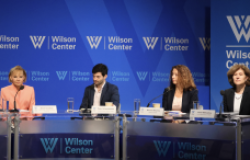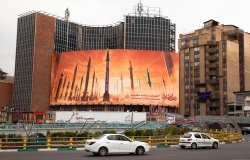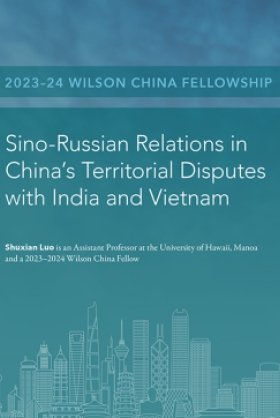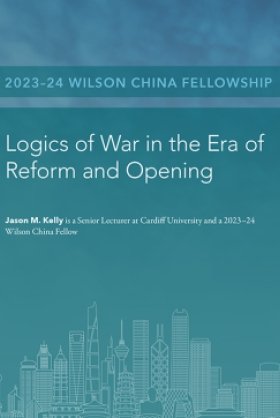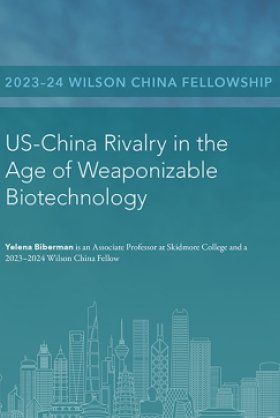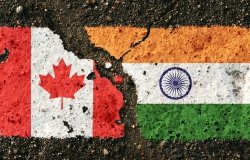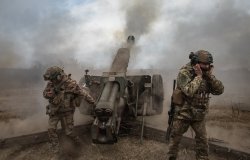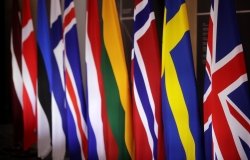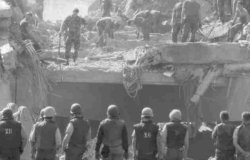Pakistan's Hidden Threat from Within
The Hizb-ut-Tahrir is a global Islamist organization that pledges to overthrow governments through nonviolent means. It poses a unique challenge in Pakistan, argues South Asia Associate Michael Kugelman in a New York Times op-ed.
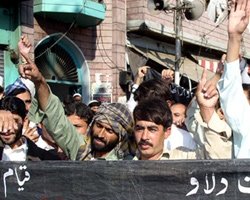
Countless threats stalk the Pakistani government, from militants in the tribal regions near Afghanistan to a backward economy teetering on collapse. In recent weeks, the focus has been on the Haqqani network, fundamentalist fighters along the border who have longstanding ties to Pakistani intelligence and have conducted deadly attacks on American troops and officials in Afghanistan.
Yet Pakistan also faces another, less publicized, challenge — from a banned Islamist organization that does not mount spectacular attacks but is nonetheless insidious. The group, Hizb-ut-Tahrir, is part of an international Islamist movement that promises to establish a caliphate through a bloodless revolution led by elite recruits.
Hizb-ut-Tahrir is not known to have committed a violent act in Pakistan. Instead, according to analysts, it looks for turncoats, proselytizing among officials in inner circles who have the power to bring the government down from within. If they succeed, Pakistan’s nuclear arsenal might fall into hands that are even less reliable than those of the military, which controls the country’s security.
The organization operates in more than 40 countries, including Britain and the United States, and has been active in Central Asia for more than a decade. But special concern arose in Pakistan after an army brigadier named Ali Khan was arrested in May 2011; his six-month trial, on charges of having ties to Hizb-ut-Tahrir, and of conspiring to overthrow the government, ended in June but a verdict has not yet been announced.
Hizb-ut-Tahrir’s ultimate goal is a global caliphate — an Islamic political and religious domain — across the entire Muslim world, and Pakistani researchers suggest that it has targeted Pakistan as a potential starting point. Several weeks before Brigadier Khan’s arrest last year, Pakistani intelligence warned the government that the movement was planning an Arab Spring-style uprising.
And last March, Pakistani news organizations published a report that Brigadier Khan had said the movement was ready to take over anytime, having equipped itself with a new constitution and shadow government. The report was attributed to a prosecution witness.
The extent of the threat is difficult to judge. While the movement characterizes its tactics as nonviolent, it has used bellicose anti-Western imagery, praised attacks on American forces in the region, and spoken of global conquest. In those ways, at least, Hizb-ut-Tahrir resembles more violent South Asian militant organizations like Lashkar e-Taiba, some of which have friends and sympathizers within the Pakistani military and intelligence elite.
The number of Hizb-ut-Tahrir members in Pakistan is unknown, and officials assume it is modest. But the group’s significance lies not so much in its size as in its composition. Its recruiting targets are high-ranking military officers, affluent, educated urbanites and students at prestigious private universities. A statement posted on its Pakistani Web site on Oct. 21 appealed “To the Generals, Air Marshals and Navy Admirals and officers of the Pakistan armed forces,” rather than to common soldiers.
“Being the real rulers of this country,” it told the officers, “only through you can the ummah be liberated from the current crises, hardship and calamities that she faces at the hands of the Western capitalist states.” (The ummah refers to the global Islamic community.)
This recruitment seems to be working. Members have claimed that the group operates in major Pakistani cities, and that thousands of Pakistanis have joined. In late March, Pakistani journalists received a text message with a link to a new video accusing the army chief, Ashfaq Parvez Kayani, of treachery. Hours later, intelligence agents detained more than 20 people on suspicion of helping produce the video — at a home in one of Lahore’s fanciest neighborhoods.
A former air base commander in the southern province of Baluchistan and a high-ranking security officer for Pervez Musharraf, then the president, were arrested in 2009 and accused of having connections to Hizb-ut-Tahrir. The group has also recruited army cadets trained at Sandhurst, Britain’s military academy.
Even though conservatism and piety are on the rise among Pakistan’s privileged classes, and recent polls find nearly two-thirds of Pakistani youths favoring an Islamic state, some analysts optimistically assume that Pakistanis as a whole would reject militant paths to that goal. Militant factions like the Pakistani Taliban are reviled for their brutality, and radical Islamist political parties have not done well in elections.
But those observations don’t take into account the deviousness of Hizb-ut-Tahrir. In simultaneously rejecting the existing political system and professing nonviolence, the group deftly captures a middle ground in the Pakistani zeitgeist, since a great many Pakistanis abhor both their dysfunctional government and the prospect of more killing. But Hizb-ut-Tahrir’s references to nonviolence obscure the group’s apparent willingness to use coups to take power, its entreaties to fight American soldiers, and its calls for Israel’s destruction.
Given the strength of Pakistan’s military, attempts to pull off a putsch like the one Brigadier Khan was accused of planning could well fail. But even a botched coup could unleash devastating results: army crackdowns, a state of emergency, terrorist attacks and a suspension of civilian government.
All this makes for yet another nightmarish prospect that Americans need to worry about in one of the world’s most dangerous countries.
This op-ed article was originally published in the New York Times.
About the Author
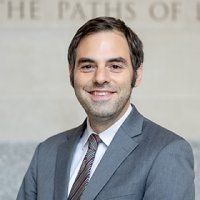

Indo-Pacific Program
The Indo-Pacific Program promotes policy debate and intellectual discussions on US interests in the Asia-Pacific as well as political, economic, security, and social issues relating to the world’s most populous and economically dynamic region. Read more


